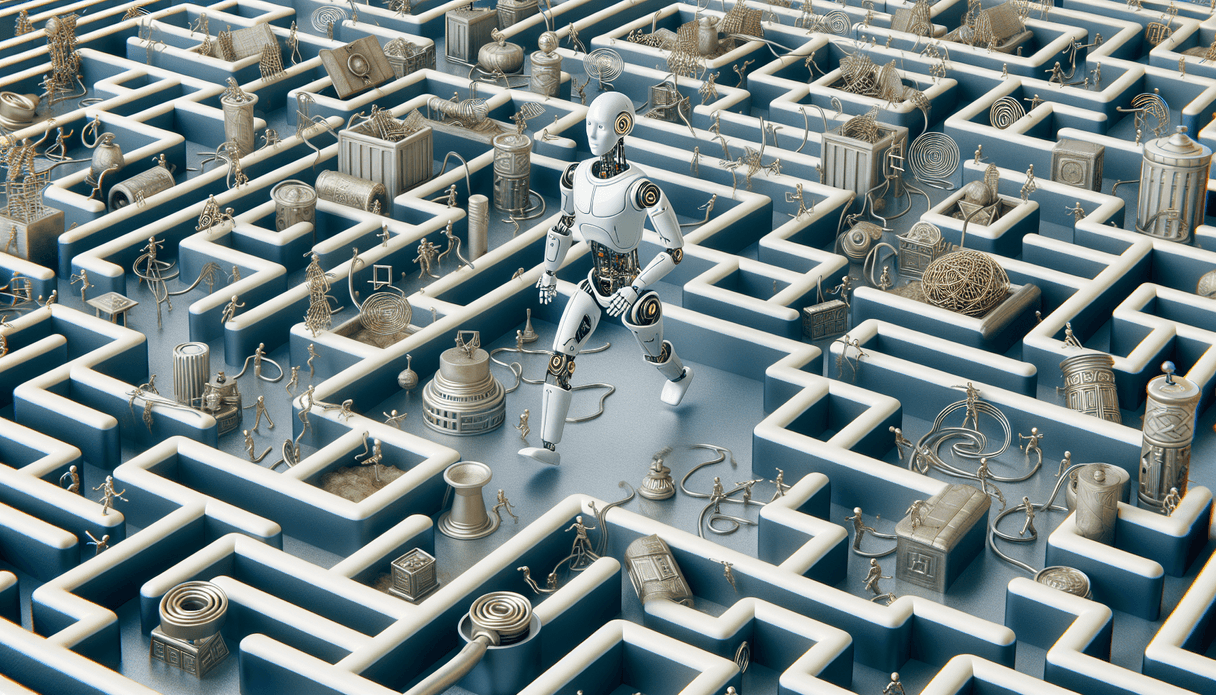Reinforcement Learning (RL) is a fascinating and rapidly evolving area within the field of Artificial Intelligence (AI) and Machine Learning (ML). Unlike traditional supervised learning, where models learn from a dataset of labeled examples, reinforcement learning involves an agent that learns to make decisions by interacting with an environment. This blog post will introduce you to the fundamental concepts of reinforcement learning, its key components, and some of its most exciting applications.
What is Reinforcement Learning?
Reinforcement Learning is a type of machine learning where an agent learns to achieve a goal by performing actions and receiving feedback from the environment. The feedback is typically in the form of rewards or penalties, which guide the agent in learning the optimal strategy or policy to maximize cumulative rewards over time.
Key Components of Reinforcement Learning
- Agent: The learner or decision-maker that interacts with the environment.
- Environment: The external system with which the agent interacts. It provides feedback in the form of rewards or penalties.
- State: A representation of the current situation of the environment. The state provides the context for the agent's decisions.
- Action: The set of all possible moves the agent can make.
- Reward: The immediate feedback received by the agent after performing an action. Rewards can be positive or negative.
- Policy: A strategy used by the agent to determine the next action based on the current state.
- Value Function: A function that estimates the expected cumulative reward of a state or state-action pair. It helps the agent evaluate the long-term benefits of actions.
The Reinforcement Learning Process
The RL process can be summarized in the following steps:
- Initialization: The agent starts with an initial policy and value function.
- Interaction: The agent interacts with the environment by taking actions based on its policy.
- Observation: The environment responds to the action by transitioning to a new state and providing a reward.
- Update: The agent updates its policy and value function based on the observed reward and new state.
- Iteration: The process repeats, with the agent continually refining its policy to maximize cumulative rewards.
Types of Reinforcement Learning
- Model-Free RL: The agent learns directly from interactions with the environment without a model of the environment. Examples include Q-Learning and Deep Q-Networks (DQN).
- Model-Based RL: The agent builds a model of the environment and uses it to plan actions. This approach can be more sample-efficient but is often more complex.
Popular Algorithms in Reinforcement Learning
- Q-Learning: A model-free algorithm that learns the value of state-action pairs.
- Deep Q-Networks (DQN): Combines Q-Learning with deep neural networks to handle high-dimensional state spaces.
- Policy Gradient Methods: Directly optimize the policy by adjusting its parameters in the direction that increases expected rewards.
- Actor-Critic Methods: Combine value-based and policy-based approaches to leverage the strengths of both.
Applications of Reinforcement Learning
Reinforcement Learning has a wide range of applications across various domains:
- Gaming: RL has been used to train agents that can play complex games like Go, Chess, and video games at superhuman levels.
- Robotics: RL enables robots to learn tasks such as grasping objects, walking, and navigating environments.
- Finance: RL is used for portfolio management, trading strategies, and risk assessment.
- Healthcare: RL can optimize treatment plans, personalize medicine, and improve patient outcomes.
- Autonomous Vehicles: RL helps in developing self-driving cars that can navigate and make decisions in real-time.
Challenges in Reinforcement Learning
Despite its potential, reinforcement learning faces several challenges:
- Sample Efficiency: RL algorithms often require a large number of interactions with the environment to learn effectively.
- Exploration vs. Exploitation: Balancing the need to explore new actions and exploit known rewarding actions is a critical challenge.
- Scalability: Scaling RL to complex, real-world problems with high-dimensional state and action spaces is difficult.
- Safety and Ethics: Ensuring that RL agents behave safely and ethically, especially in critical applications, is a significant concern.
Conclusion
Reinforcement Learning is a powerful paradigm in AI and machine learning that enables agents to learn from their interactions with the environment. By understanding its key components, processes, and challenges, you can appreciate the potential and complexity of RL. As research and technology continue to advance, we can expect to see even more innovative applications and solutions driven by reinforcement learning.
Whether you're a beginner or an experienced practitioner, exploring reinforcement learning can open up new avenues for developing intelligent systems that can learn and adapt in dynamic environments.

